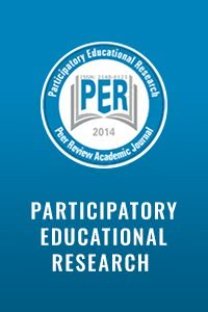Students’ Attitude Towards Edmodo as a Supplementary Tool for Higher Education
Today the number of universities equipped with learning management system is increasing, however its potential cannot be used as it was intended. Edmodo is one of the learning management system that can be used to support social aspect of learning. Also, effective use of Edmodo like learning management systems needs to be studied over more to achieve better integration. Recognizing attitudes of the students towards this kind of supplementary tool in a higher education institution ensure quality and success. The purpose of this study was to investigate what the students’ attitude towards Edmodo learning management system and to determine its accomplishment. Fifty college students in an “Introduction to Computer” course for pre-service teachers participated in the study. The author collected data through interviews and document analysis. Researcher interviewed with 10 of the students after the course and reviewed the students’ posts on Edmodo. Interview records and document analysis on Edmodo posts were used to increase in depth understanding about students’ attitude and accomplishment of Edmodo use as a supplementary tool. The results of these qualitative data collected via interviews revealed that students had a positive attitude towards Edmodo, and they thought that it is a good tool to improve students’ learning opportunities through active participation and communication. They want to be active in classroom and they want to develop a warm relationship with instructors by means of this kind of learning management tools
Keywords:
technology enhanced learning, case based action research, Edmodo learning management system,
___
- Akpınar, B., and Özer, B. (2004). The Assessment of the Teacher Professional Knowledge Lessons in the Technical Education Faculties According to Students’ Point of View. Fırat University Journal of Social Science, 14(2), 147-166.
- Allen, I.E. & Seaman, J. (2006). Making the Grade: Online Education in the United States. Needham, MA: Sloan Consortium.
- Brady, K. P., Holcomb, L. B., & Smith, B. V. (2010). The use of alternative social networking sites in higher educational settings: A case study of the e-Learning benefits of Ning in education. Journal of Interactive Online Learning, 9(2), 151–170.
- Cavanaugh, C. (2005). Virtual Schooling: Effectiveness or Students and Implications for Teachers. Proceedings of Society for Information Technology and Teacher Education International Conference. Chesapeake, VA: AACE
- Colorado, J. T., & Eberle, J. (2010). Student demographic and success in online learning environments. Emporia State Research Studies, 40 (1), 4-10.
- Fraenkel, J. R., & Wallen, N.E. (2006). How to design and evaluate research in education. New York: McGraw-Hill.
- Friend, B., & Johnston, S. (2005). Florida Virtual School: A choice or all students. In Z. L. Berge & T.Clark (Eds.), Virtual schools: Planning for success. New york: Teachers College Press
- Gall, M. D., Gall, J. P., & Borg, W. R. (2003). Educational Research: An Introduction (7th ed.). Pearson Education,Boston: Allyn & Bacon, USA.
- Hart, J. (2015). Top 100 Tools for Learning 2013 In Centre for Learning & Performance Technologies. Retrieved August 18, 2015, from http://c4lpt.co.uk/top100tools/
- Hatunoğlu, Z. (2006). Muhasebe Eğitiminde Bilgi Teknolojisi Kullanımının Sunum Kalitesine Olan Etkilerinin Tespitine İlişkin Bir Araştırma, Vocational Education, 30.
- Osciak, S. Y., & Milheim, W. D. (2001). Multiple intelligence and the design of web based instruction. International of Instructional Media, 28 (4), 355-361.
- Özden, M. Y. (2004). Law of the minimum inlearning. Journal of Educational Technology &Society, 7(3), 5–8.
- Özden, M. Y., Gedik, N., Kocaman-Karoğlu, N. (2012). A Web-based Training Experience in Turkey: A University-National Police Collaboration. Yang H. H. and Yuen, C. S. (Ed.). Handbook of Research on Practices and Outcomes in Virtual Worlds and Environments. Hershey, PA: IGI Global.
- Patton, M.Q. (2002). Qualitative Research and Evaluation Methods. Thousand Oaks, CA: Sage Publications, Inc.
- Rosenberg, M. J., Coscarelli, W. C., & Hutchison, C. S. (1992). The origins and evolution of the field. In H. D. Stolovitch & E. J. Keeps (Eds.), Handbook of human performance technology (pp. 14–31). San Francisco: Jossey-Bass.
- Project Tomorrow. (2011). Mapping a personalized learning journey – K-12 students and parents connect the dots with digital learning, Retrieved on 13 August 2015, from http://www.tomorrow.org/speakup/pdfs/SU11_PersonalizedLearning_Students.pdf
- Tashakkori, A. & Teddlie (1998). Mixed Methodology: Combining Qualitative and Quantitative Approaches. Thousand Oaks, CA. : Sage Publications.
- Zucker, A., & Kozma, R. (2003).The virtual high school: Teaching generation V.. New york: TeachersCollege Press.
- ISSN: 2148-6123
- Yayın Aralığı: Yılda 6 Sayı
- Başlangıç: 2014
- Yayıncı: Özgen KORKMAZ
